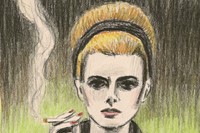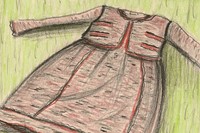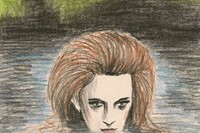There aren’t many trends that run the gamut from Elizabeth II to Anna Wintour, or from French establishment to punk, but tweed is as much a cultural mix as wool...
There aren’t many trends that run the gamut from Elizabeth II to Anna Wintour, or from French establishment to punk, but tweed is as much a cultural mix as wool.
A typically British fabric, it was used by divergent designers in their autumn collections, who played on both its strength of association and its characteristic chameleon qualities. It is a textile equally at home on both traditional and fashion-forward wearers, making it a commercial dream.
Miuccia Prada created a naive-looking overcoat in red and charcoal-stippled tweed, which straddled the boundary between traditional schoolgirl in outerwear and Bardot-esque ingénue caught in the cold. Given the overall 50s theme of the collection, the connotations overlap brilliantly: tweed is symbolic of a practical, outdoorsy sort of existence that has been assimilated into an aesthetic scene.
At Jil Sander, Raf Simons showed checked tweed mini-dresses of a length many archetypal wearers of the fabric would be shocked by. The collection was inspired by Tomb Raider and The September Issue, Simons claims, and the micro-skirts were more can-do than conservative, to be accessorised with a gun and grappling hook rather than a chain of pearls.
It was Vivienne Westwood who spun the textile in a new way: her 1987 Harris Tweed collection catalogued her passion for the eccentric yarn beloved by royals and gamekeepers alike. Having made her name via the punk movement, the SEX boutique and the Seditionaries label, Westwood brought verve to classic clothes that were fitted and historical, even self-referential. The look came full-circle when the Princess of Wales, whose forebears the collection was originally based on, turned her attention to the label and began wearing it. Milliner Stephen Jones even created a crown from the material for the show, which Westwood claims she still wears for dinner every so often.
Likewise, Dolce & Gabbana gave tweed an ironic royal spin for autumn/winter 2008, holding up our own Queen Liz as their muse and sending models down the catwalk in headscarves tied under the chin.
If tweed is an essentially British affair, then its dominance in Gallic wardrobes should confirm its fluidity of style. Where we like ours baggy, often shapeless, a bit grotty and covered in dog hair, the French take theirs on skirt suits and chic daytime shifts, popularised by Coco Chanel and shown again for autumn by Karl Lagerfeld. Worn in the show by models who had to navigate a giant iceberg and polar bears, it was yet further proof of tweed being suitable for practically every occasion.
Text by Harriet Walker
Zoë Taylor has appeared in Le Gun, Bare Bones, Ambit and Dazed & Confused. She is currently working on her third graphic novella and an exhibition.



